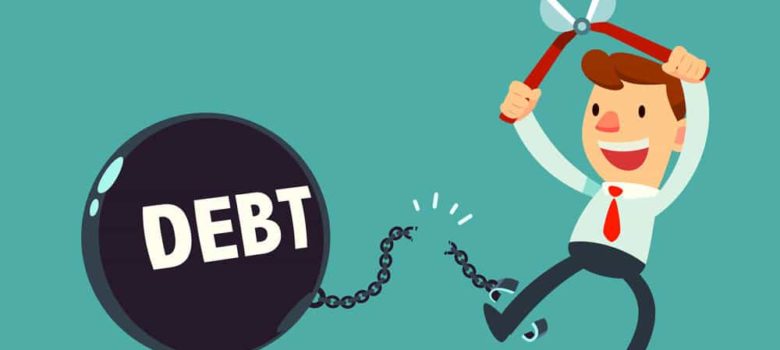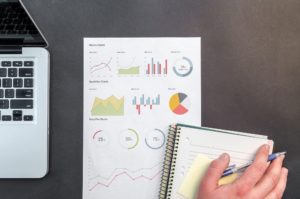
- Feb. 05
- Richard Parker
Dealing with Your Debts in an Effective Manner
The majority of us have experienced debt at some point or another. In fact, studies suggest that the average adult has a surprising amount of debt. Under 35s are reported to have an average of $67,400 outstanding. 45 – 54 year olds top the rankings with around $134,600 to their name, while debt seems to reduce by retirement – individuals aged 75 and over tend to have about $34,500 debt. But not all forms of debt are necessarily bad. Many people have student loans that can be paid off at a reasonable rate and a huge number of people have mortgages that are slowly but surely being cleared. Debt only becomes problematic when it is a direct result of financial irresponsibility. If you can afford to clear your debts at an agreed rate, you’re in the all clear. If you are struggling to repay debts because you have spent beyond your means and don’t have a realistic way to get all of the money back to the lender, you’re going to find yourself in a fair amount of trouble. So, if you are struggling with debt, let’s take a moment to get to grips with how you can deal with your debts in an effective manner.
Establish Your Total Debt
Many of us have various sources of debt. We have credit cards with different credit card providers. We have loans with different loan providers. We have financial agreements with all sorts of professional lenders. But it’s not enough to simply know that you are in debt. If you intend to turn things around and clear your dues, you need to know the exact amount that you owe out! This will help you to come up with some sort of action plan. So, sit down and note down all of the money you owe – how much and to who.
Determine How Much Interest You Are Paying
Once you know how much you owe, you should also take the time to figure out how much interest you are paying on each debt. Professional lenders attach an interest rate to any money they provide you with. This is how they profit from you making use of their services. The interest rate is also known as an “APR” rate and is generally shown as a percentage. Money borrowed at a higher interest or APR is going to cost you more in the long run, so you will know that you need to prioritise clearing the debts that you have with the highest rates.
Consolidate Your Debts
If you have multiple debts, you may find that you are best off consolidating them. Debt consolidation is a form of debt refinancing. Essentially, you take out one large loan to clear all of your existing loans. You’ll still owe the same amount at the end of the process (in fact, you may owe a little more due to fees entailed in the process). However, it is generally more than worth it! By owing the total sum to one lender, you will find it much easier to manage your finances. You will have one fixed payment date per month. This is much easier than having to make multiple payments to multiple places. You’re less likely to miss payments and end up hit with fees and fines! Find the best consolidation offers.
Create a Budget
Once you have started taking active steps towards clearing existing debt that you have, it’s extremely important that you draw up a personal budget.
Knowing Your Income
The number of people who grossly misjudge their total income is astounding. It’s extremely important to remember that the amount of money that you have noted down as your salary isn’t necessarily the amount that you have free to take home and spend. At the end of the day, if you’re earning over a set amount of money, you’re going to have to pay taxes and other necessary contributions. This money is taken by the state and put to good use – it helps to provide public services, like the emergency services, welfare systems, education systems, and even healthcare systems. It may also be used to fund public projects, such as the development of public roads, public rail, and housing. So, to determine exactly how much money you have to spend each month, you need to work out your total income after tax and other contributions.
Deduct the Essentials
Once you know your genuine income, it’s time to deduct necessary expenses. These are the things that you need to live. The things that you have little choice but to pay if you want to lead a comfortable and enjoyable lifestyle. They include:
- Your rent or mortgage payments
- Your energy bills
- Water bills
- Food expenses
You should also deduct other necessary payments at this point, such as monthly payments on credit cards, loans, or other financial agreements.
Sticking to Your Disposable Income
Following deduction of the essentials, you will be left with your disposable income. This is the money that you have free to use for the remainder of the month. Now, if you are experiencing debt, it’s because you have exceeded your disposable income in the past. It’s extremely important that you live within the limits of your disposable income now that you are aware of it. This is known as “living within your means”. If you can do this, you won’t ever have to worry about debt again!
Bankruptcy
If you are really struggling and cannot find a realistic way to clear what you owe, you might want to consider bankruptcy. This is not an ideal process, but it is a means of writing off your debts and starting anew. You should seek professional advice on this matter, as it can impact your life in a major way.
Hopefully, the above information will come in useful if you are struggling with debt. No matter how much you owe, remember that there is a resolve. So, don’t give up hope! Things can and will improve as long as you take the right steps in the right direction!


